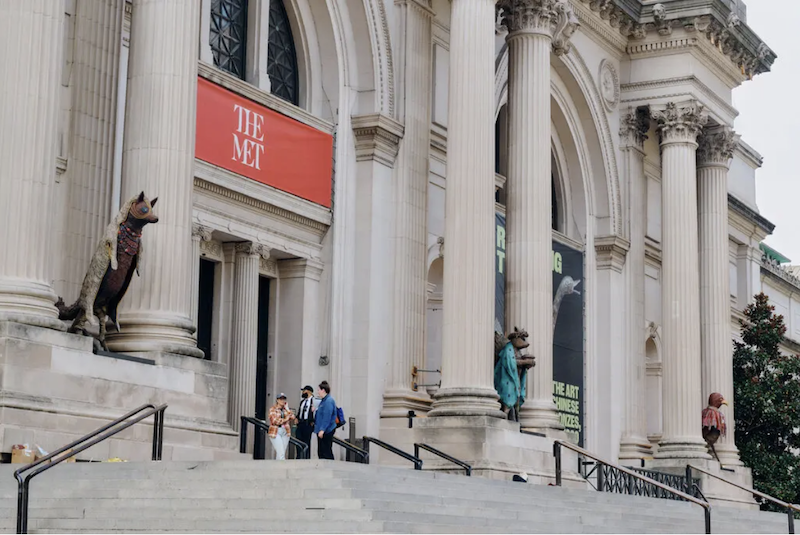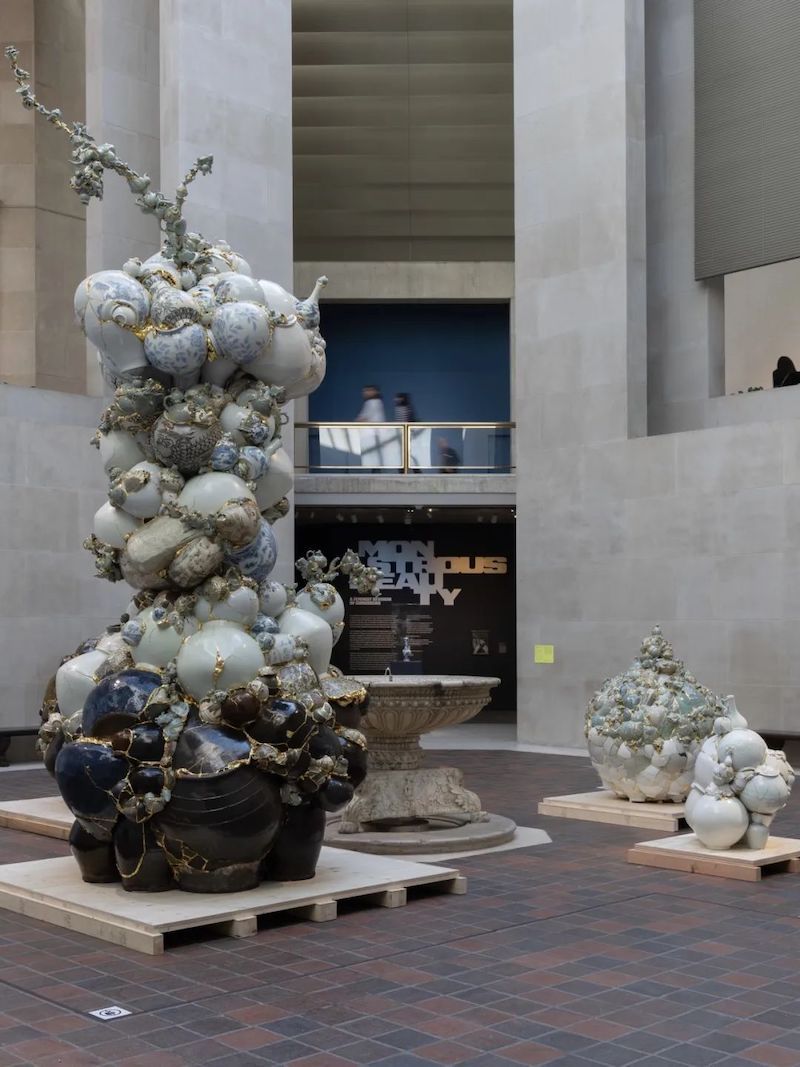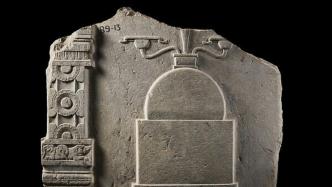
The oldest monumental religious building in ancient India, the stupa houses the Buddha's relics and teachings, often decorated with snakes and trees. "Trees and snakes" are common images of gods and gods in early Indian Buddhism, and they have a protective function. "The Snake and the Tree" also forms the title of a new exhibition at the Metropolitan Museum of Art in New York, "Early Buddhist Art from 200 BC to 400 AD."
With more than 125 rare artifacts from India, the exhibition reveals the origins of Buddhist art before the statue of Buddha.
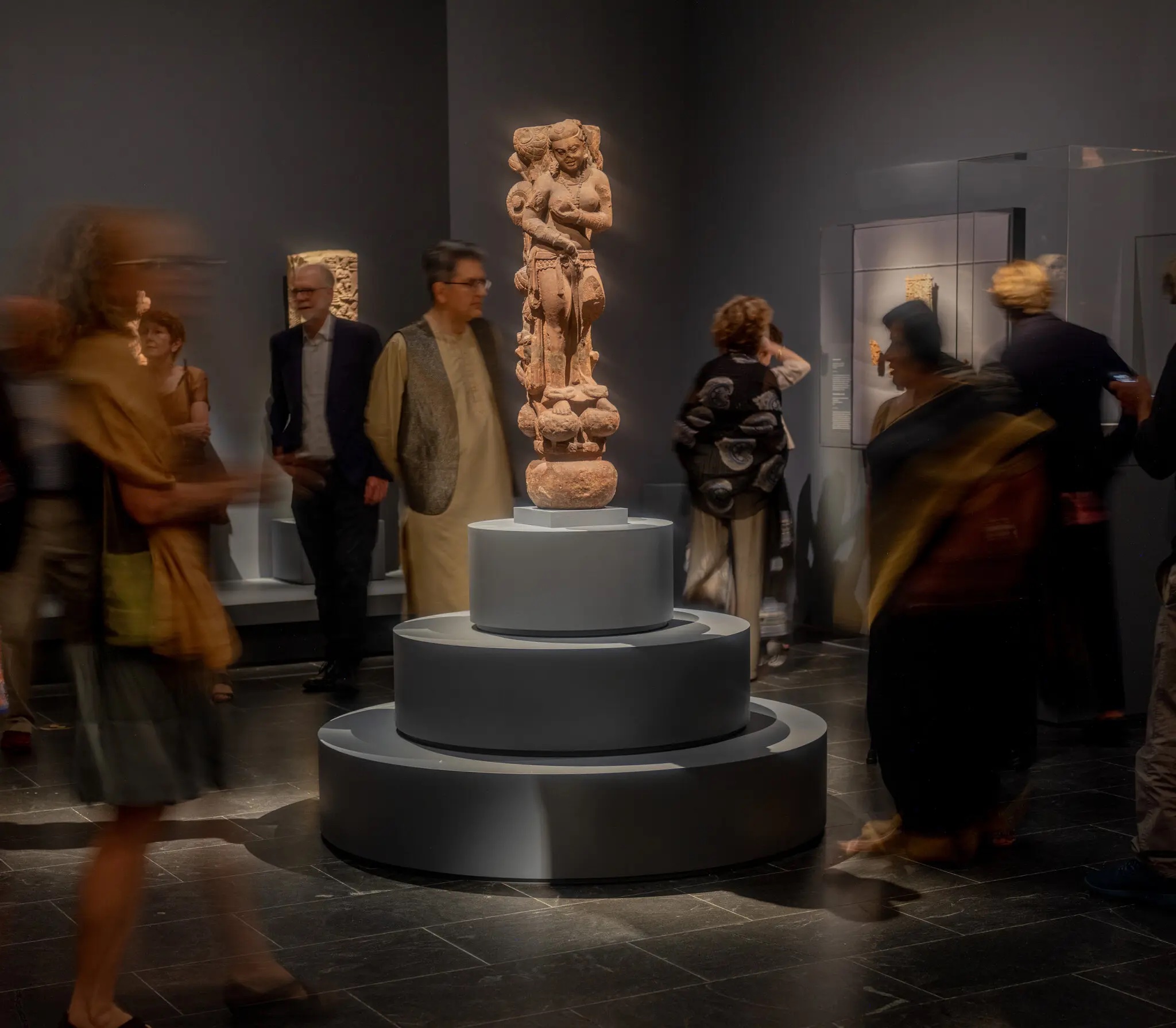
At the exhibition site, a red sandstone goddess of abundance (2nd century AD) collected by the National Museum in New Delhi, India, wearing heavy jewelry, with two peacocks on her back perched on a lotus flower, announcing the arrival of the monsoon.
On July 20, local time, at the opening ceremony of the exhibition "Trees and Snakes: Early Buddhist Art from 200 BC to 400 AD" at the Metropolitan Museum of Art in New York, five monks in cassocks recited Pali (ancient Indian language, almost Sanskrit), making a peaceful sound like the sea. Surrounding ancient sculptures project a different kind of visual music - forest birds chirping, gods roaring, demigods dancing, as if at a summer party.
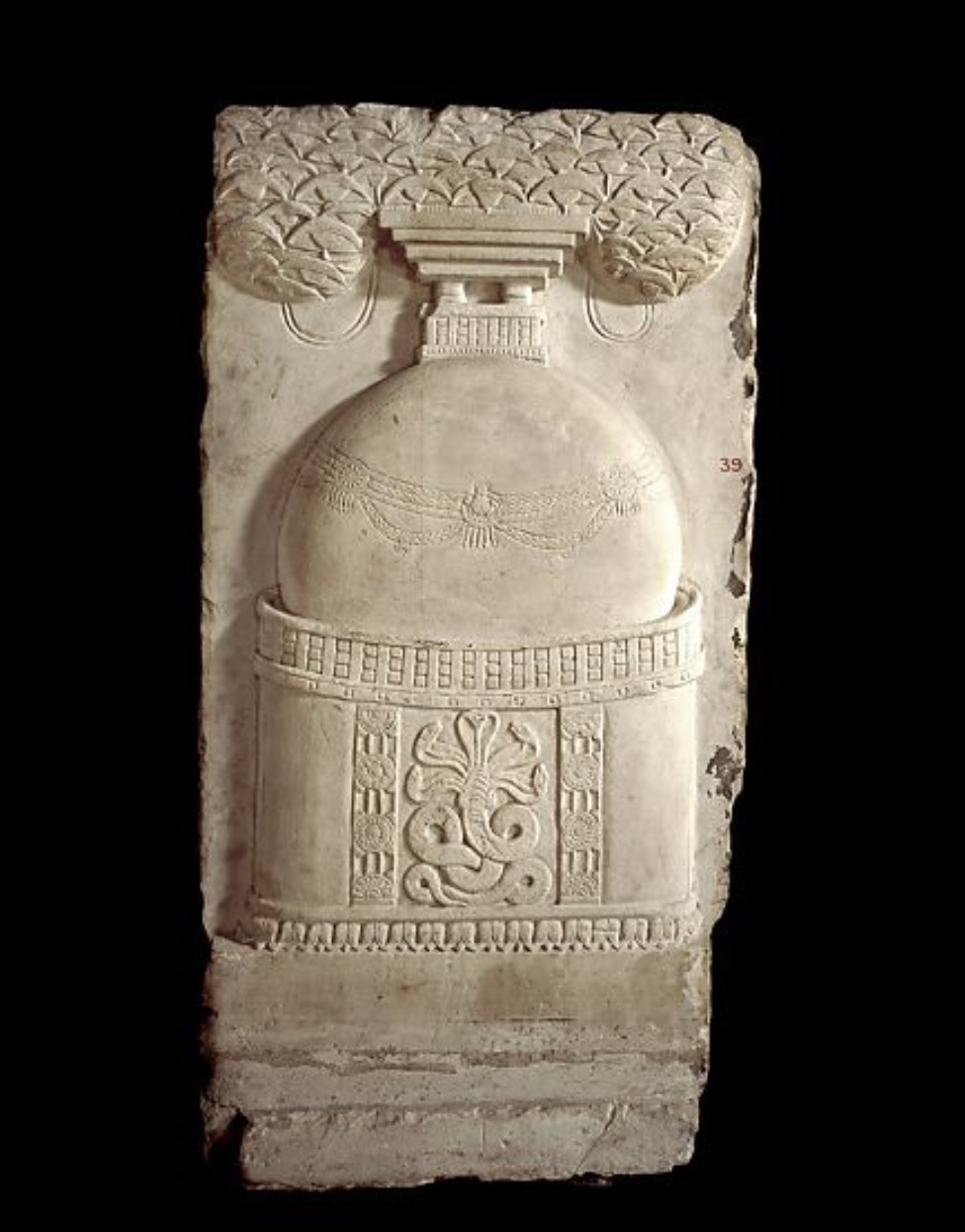
Stupa relief with snake pattern, from the Great Stupa of Amaravati, Andhra Pradesh, southern India, second half of the first century AD.
The relief depicts a stupa with entwined snake naga, the supreme protector of the relics inside the stupa. Another layer of linden leaves is used to make a protective umbrella on the top of the pagoda.
Illuminated by lights in the exhibition hall, these sculptures seem to be carved out of the darkness and emit a magnificent light. It may be hard for you to imagine the difficulties behind the exhibition, including diplomacy and logistics. It took the museum and curators more than a decade to bring together the works, with more than 50 of them leaving India for the first time. Over the past few years, American museums have rarely presented such a large-scale exhibition of ancient Indian art, and it is difficult to see it again in a short time.
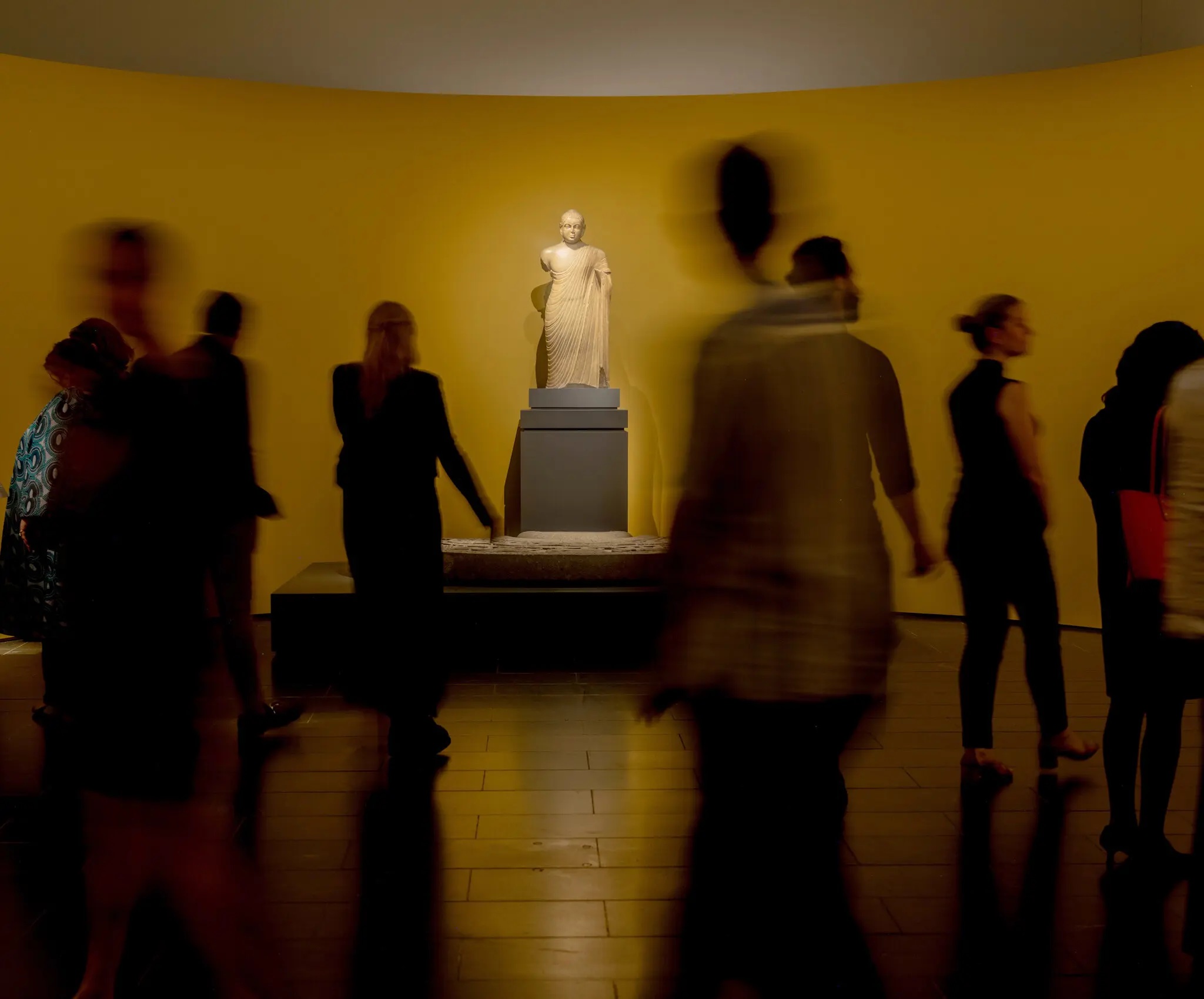
Statue of Buddha, limestone carving, Telangana, 3rd century AD
As a kind of belief, Buddhism attaches great importance to the progress and awareness of human mind and morality, and advocates that all things have animism and all beings are equal. The exhibition begins with the land, the spiritually driven nature seen and understood by the Buddha.
Buddha was born in the fifth century BC as a prince named Gautama Siddhartha. As soon as Siddhartha was born, he was seen by eight Brahmans including Immortal Ashita with magical powers and predicted that he would become a generation of wheel-turning holy kings, or become the most noble enlightened person when he became a monk. In order to prevent him from becoming a monk, his father and king expelled all visible pain and ugly things in the royal city, leaving behind sensual pleasures and beautiful things. However, after all, Siddhartha saw old people, sick people, and dead people on his travels, realized the impermanence of the world, and saw the solemn and good friend of the monk who was practicing, so he decided to give up his status as the heir to the royal family and his noble life, and became a monk to practice meditation and enlightenment, becoming an ascetic roaming in India at that time one.
He soon realizes that he is in a world full of spiritual powers. Trees have souls, birds impart wisdom, snakes have protective powers... There are also a large number of natural spirits in the world. For example, male yakshas (yakshas) and female yakshis (yakshis), they are ugly and beautiful, evil and good.

Yakshi (a female spirit), from the Great Stupa of Amaravati, Andhra Pradesh, southern India, mid-second century BC
After experiencing suffering, Siddhartha became a Buddha at the age of 35 under the Pippala tree (later revered by believers as the Bodhi tree). After that, he traveled all over the banks of the Ganges, preaching to people the profound truths he discovered, and gradually attracted more and more people to listen to his teachings. The Buddha believed that all living beings are equal, opposed the caste system, and preached the wonderful law to people of all social classes and identities without hesitation. In the following decades, he traveled around and recruited many disciples, and the influence of Buddhism gradually expanded.

Painted stone slabs of Andhra Pradesh stupas. Great stupa of Durikata, Karimnagar district, Telangana state, India, 1st century BC
Buddha died at the advanced age of 80 (called Nirvana in Buddhism), at which time Buddhism has become a religion. For art, the more important significance is to construct the regulations of architecture, and the pagoda is one of them. The stupa is based on traditional South Asian earthen tombs, constructed of fired masonry and compacted soil, and embedded with Buddha relics.
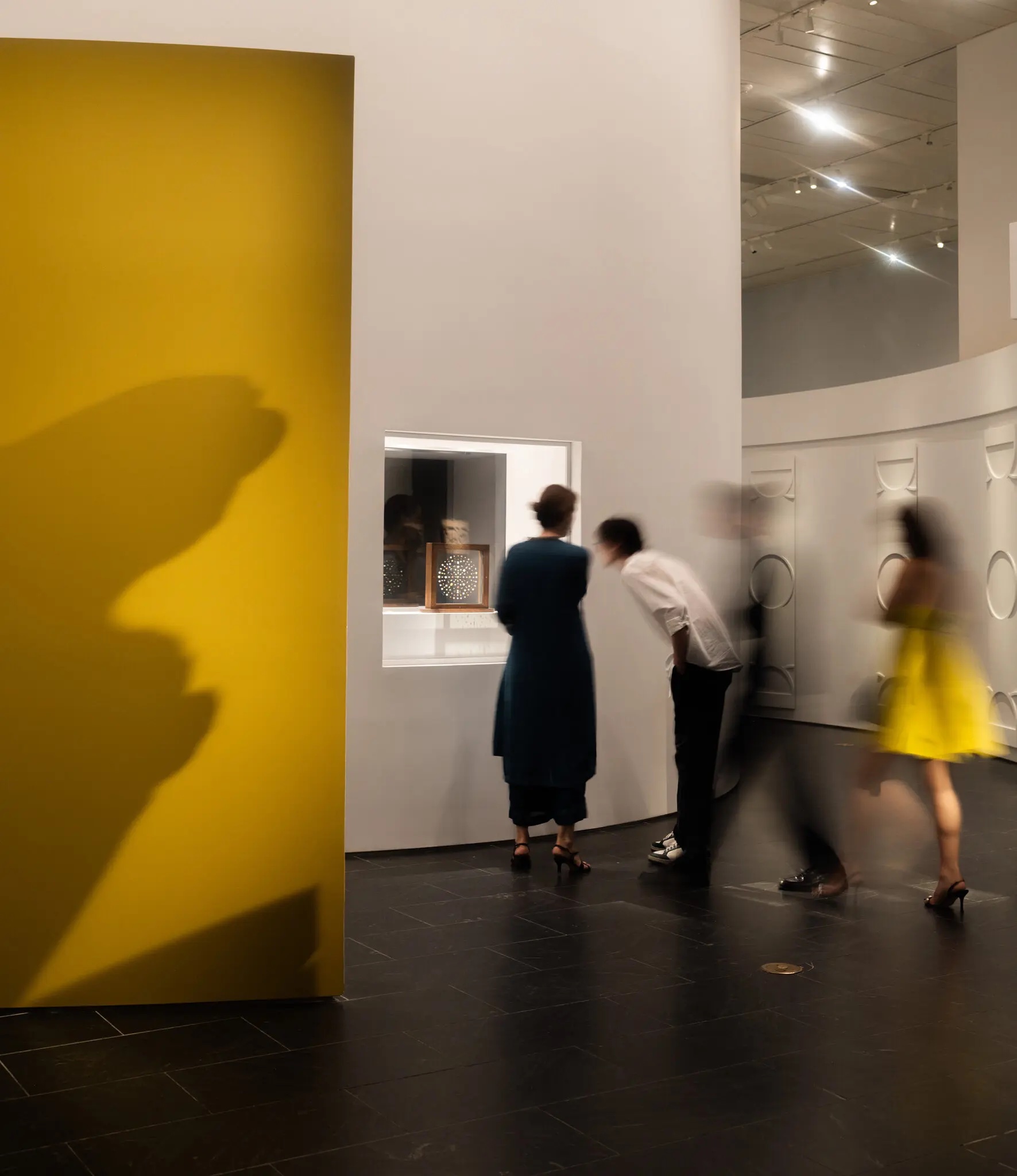
At the entrance of the exhibition, visitors gaze at the cultural relics from 240-200 BC in a huge imitation stupa.
The stupa is a recurring visual element in the Met exhibition. The soaring, accessible replica stupa is a key feature of Patrick Herron's exhibit design. Entering the stupa, viewers can see relics from the third century BC, crystal shards, tiny pearls and gold flakes arranged in radiant mandala patterns.

Piprahwa (Piprahwa, located in Siddhartnagar County, Uttar Pradesh, India. According to legend, after the death of Sakyamuni, the relics obtained from cremation were divided into eight stupas and worshiped separately. This place is one of them) in the Great Stupa Relics of the Mauryan Dynasty, 240-200 BC

Artifacts including semi-precious stones, crystals, pearls and shells in the Great Stupa of Biprova
At the beginning of the exhibition, a stupa relief carved on a limestone slab attracts the audience's attention. Dating to the first century AD, the relief was once attached to a vanished stupa in Amaravati (present-day Andhra Pradesh) in southern India. Although Buddha never came here, it is the birthplace of some magnificent Buddha monuments and is the origin of most of the works featured in the Met's exhibition.
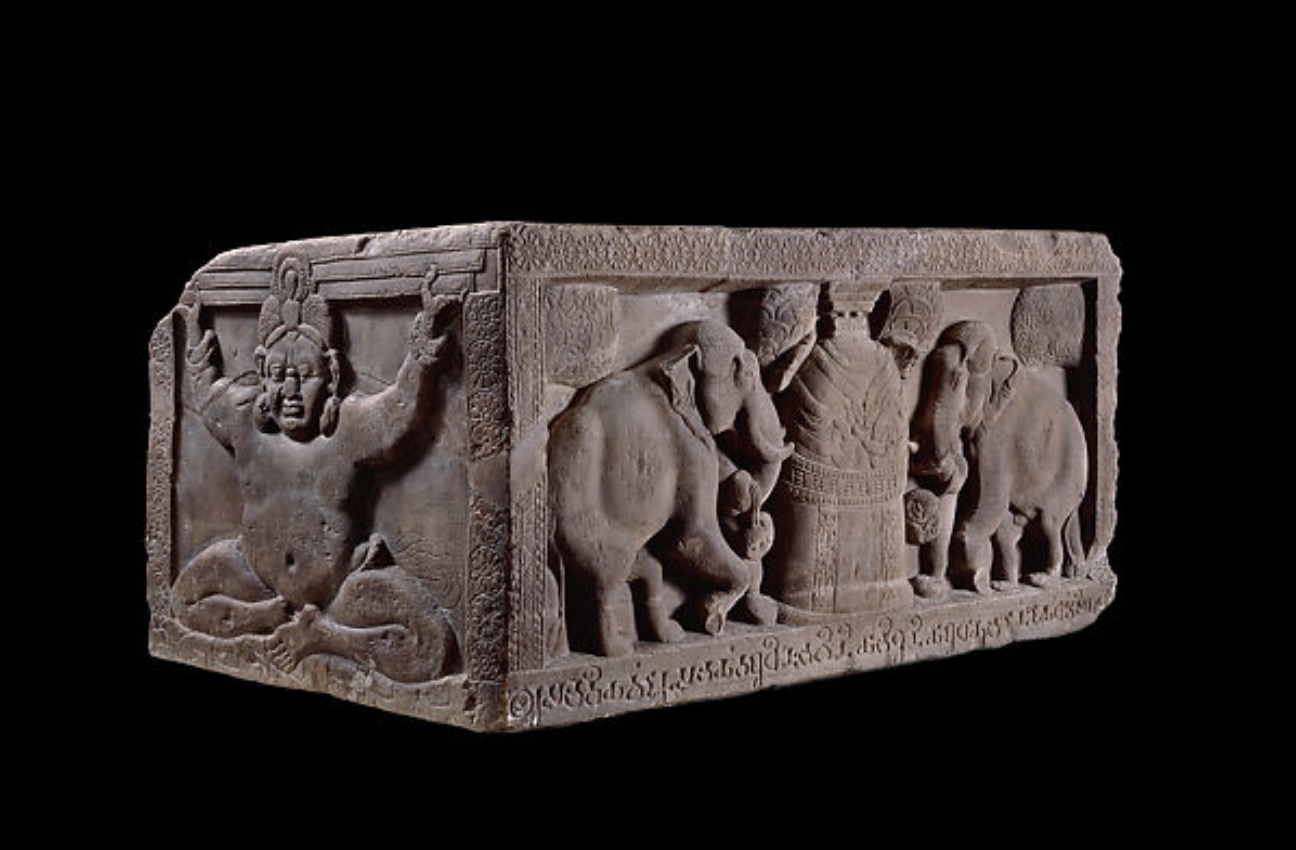
Elephant worshiping a stupa, Amaravati Stupa, Andhra Pradesh, India, late 1st century AD This architectural element is likely the pedestal of a seated lion, found at the pedestal marking the entrance to the stupa Memorial column. Its façade features a herd of worshiping elephants, a scene that mirrors descriptions by the 5th-century AD Chinese monk Fa Xian, who told stories of a herd of elephants cleaning the stupa with water from their trunks and offering flowers.
On a slab of relief stone is carved the natural and supernatural worlds that Siddhartha knew about when he became a Buddha. A majestic snake god guards the gate of the stupa. A huge umbrella tree shades the dome of the stupa. In a nearby relief, a stern-faced, furry spirit of nature appears to emerge from the stone like a mist.
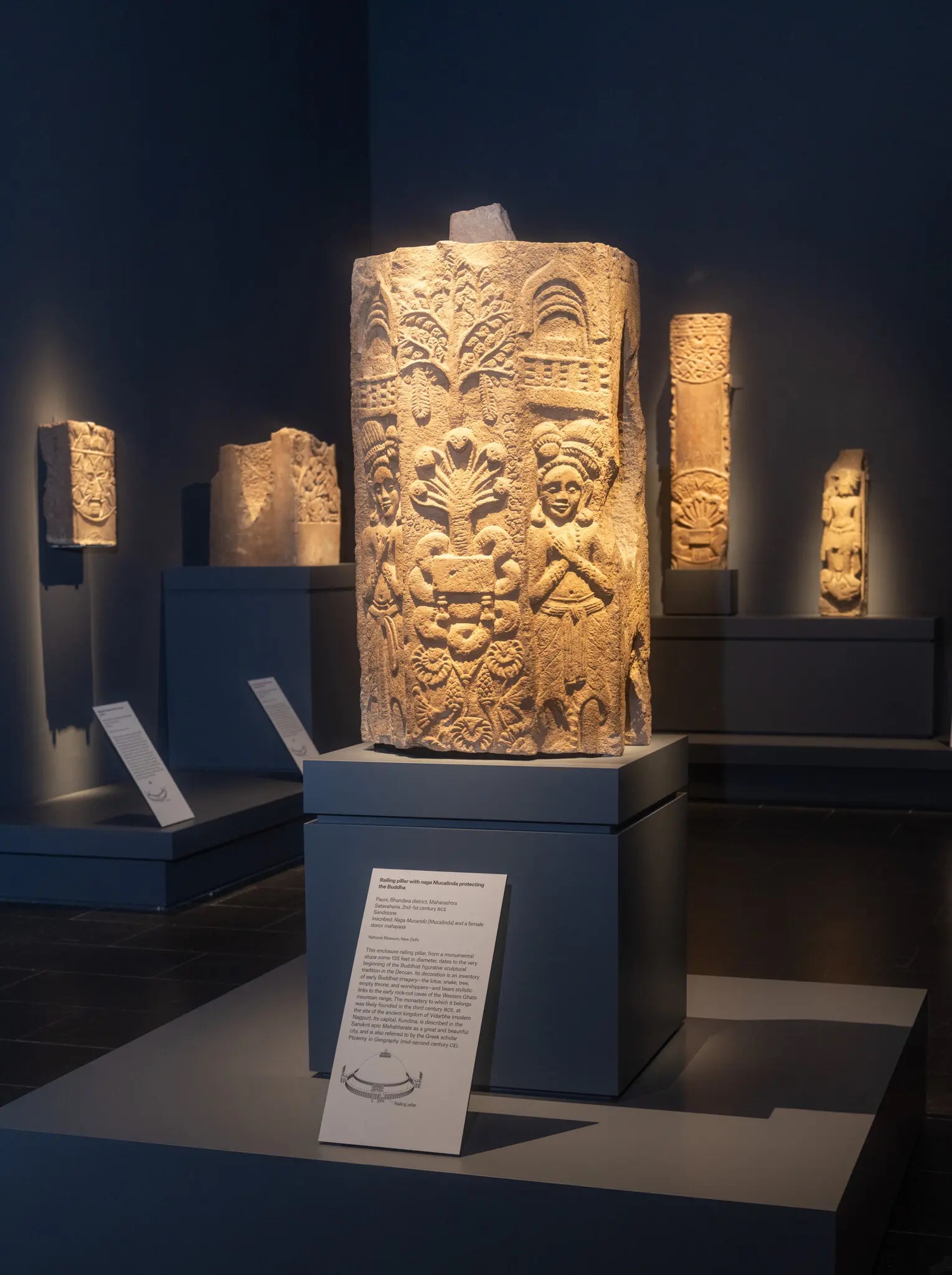
The centerpiece of the sandstone relief is the Bodhi tree marking the Buddha's awakening, Great Stupa of Bahut, Madhya Pradesh, c.150-100 BC
In other stupa reliefs from animal worship in northern and southern India, you'll see multiple figures kneeling, praying, flying—here's the line between the natural and the supernatural. The public worship of early Buddhism, like the worship of nature in animism, had an atmosphere of carnival. In addition to ceremonies and processions, there are food vendors, incense vendors and street performers, which can also be seen in India today. There is an air of excitement and abundance pervading these occasions - about heaven, but also about earth.
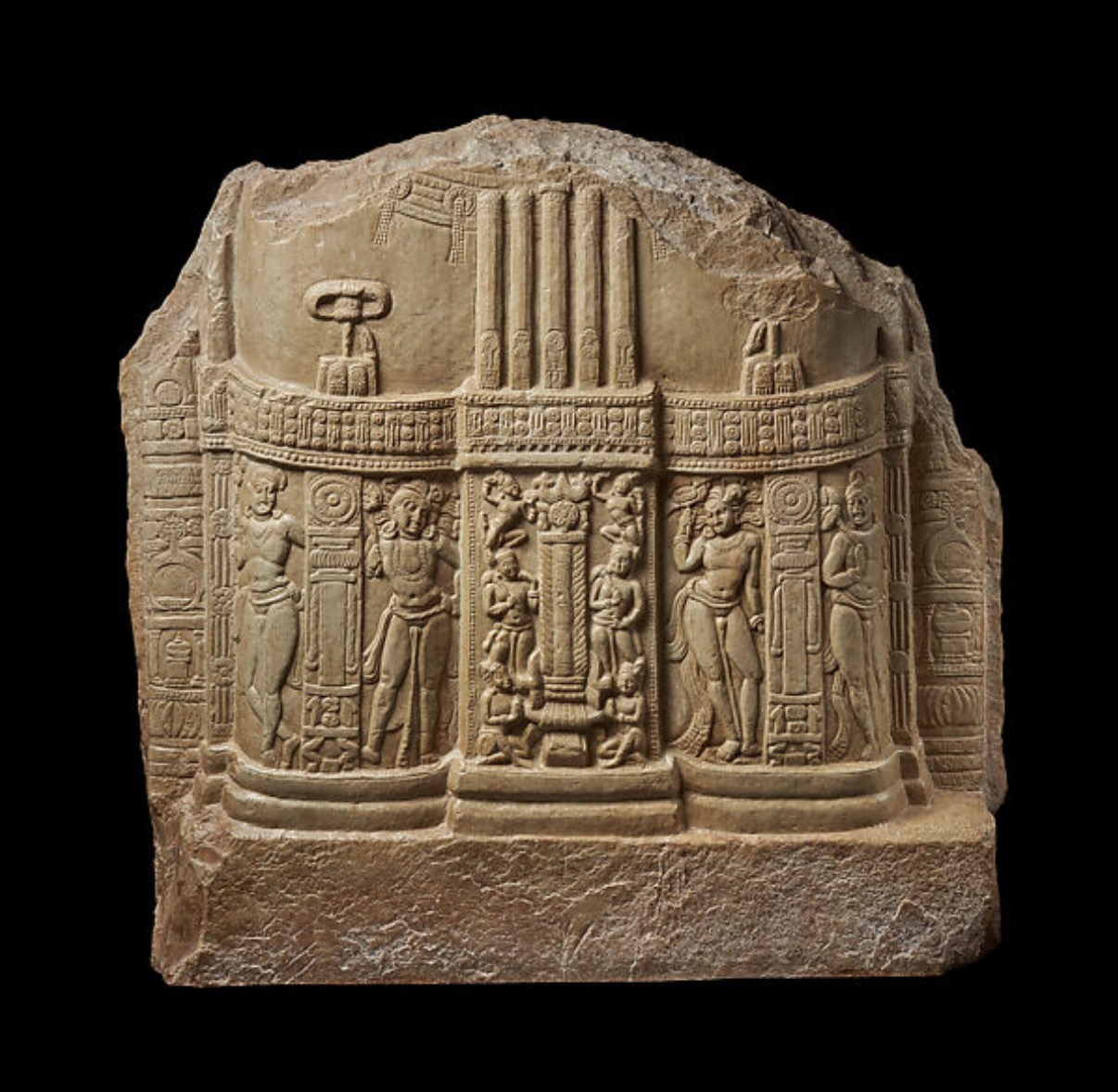
Stupa relief, Amaravati Great Stupa, Guntur District, Andhra Pradesh, India, 3rd century AD
Buddha himself rarely appears in them. Images of the Buddha appear in early Buddhist art only in the form of symbols: empty thrones, burning pillars, footprints or the stupa itself. This is true even for works depicting scenes from the life of the Buddha. It was as if, after his Nirvana, it would be sacrilege to return to a physical body.

Foyin, India, Panigiri, Telangana, late 3rd-4th century AD
The Buddha's road to becoming a Buddha has also become the road to salvation for believers in later generations. Salvation, like art, is a universal concept, only the details and dimensions vary from place to place. Although India is the specific setting of the Met exhibition, curator John Guy (the Metropolitan Museum of Art's Curator of South and Southeast Asian Art) avoids the misconception that early South Indian Buddhism and culture are related to the land closely related phenomena.
In the room titled "Buddhist Art in a Global Context," the curators demonstrate the long-term exchange between the subcontinent and the Mediterranean world by presenting two exquisite luxury trade objects. One, a bronze replica of a statue of Poseidon, the Greek god of the sea, dated to first-century Rome, was discovered in the 1940s in western India along with other ancient Roman artifacts and has since been kept in a local museum. Another stunning work, also from the first century, is a statue depicting a fully nude and visibly voluptuous beauty called "yakshi" (Yakshi), carved in South India and discovered in Pompeii in 1938 ruins.
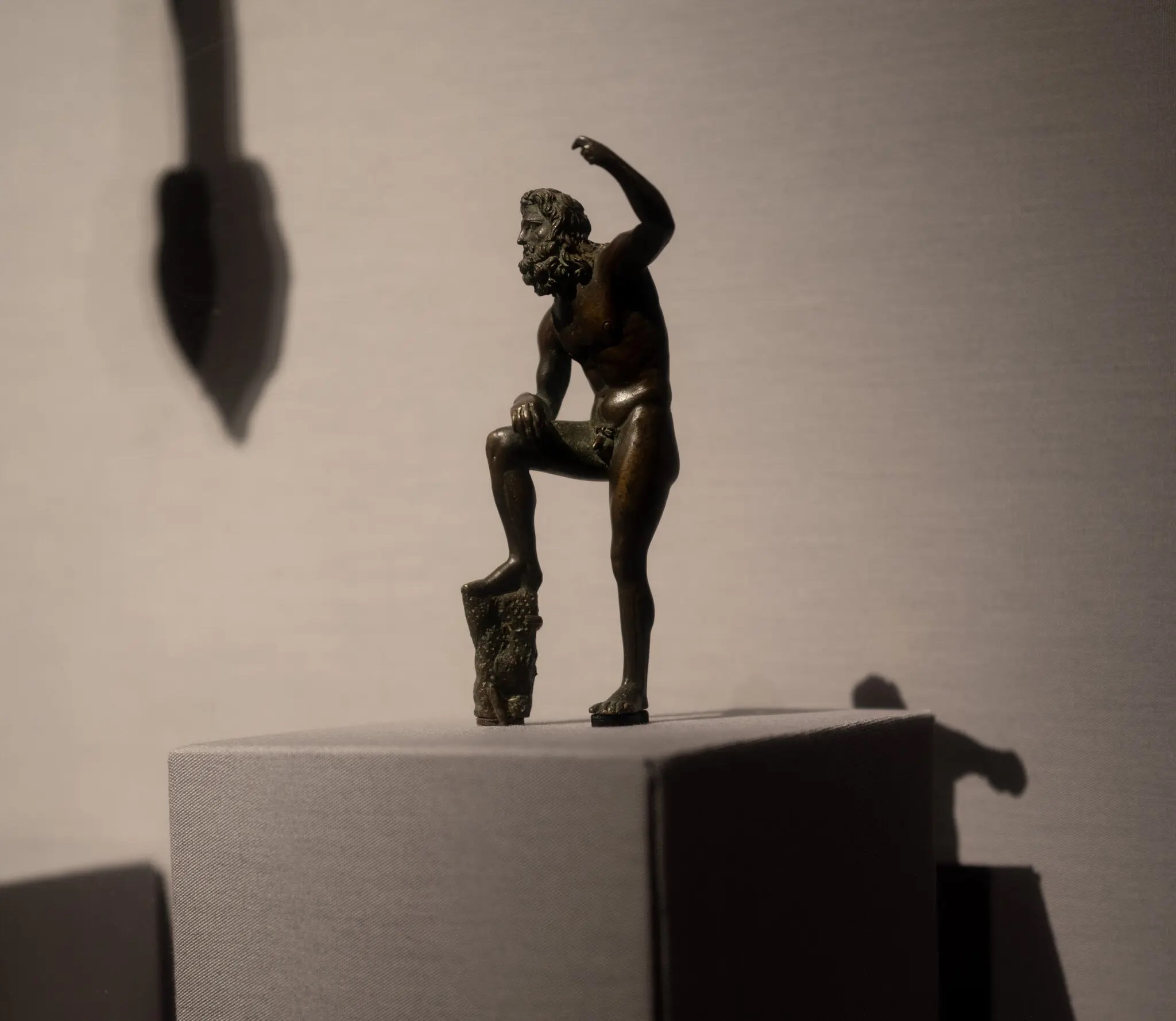
The statue of Poseidon, the Roman god of the sea from the first century AD, was discovered in western India in the 1940s and was preserved in a local museum.
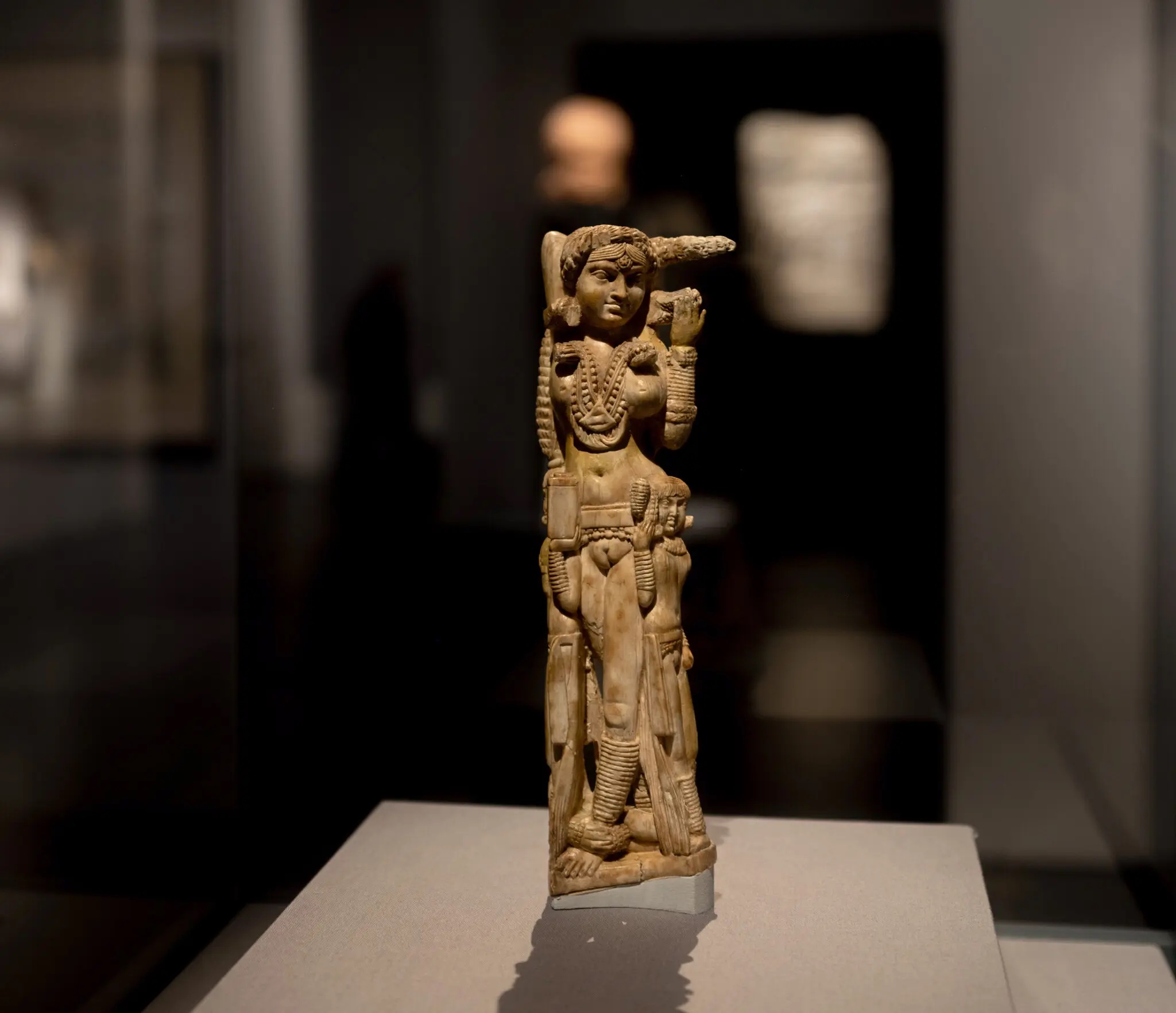
Ivory figurine of a woman with a fork, Maharashtra, 1st century AD, discovered during an excavation at Pompeii.
In the comparison of the works of Rome and India in the same period, we can see traces of mutual reference. Statues of figures also began to circulate widely in political and religious centers such as Gandhara. It wasn't until about the third-fourth century that the style spread southwards, probably driven by commercial maritime trade between Greater Rome and the subcontinent.
The Buddha himself also began to appear in physical embodiment. His image was carved (or cast) into a statue in cassock, replacing the snake god and tree spirit from the old nature worship, and became the main object of worship in the temple.

Relief of a stupa with a snake god protecting the Buddha, Nakhagana Kunda, Andhra Pradesh, late third century AD
At the end of the exhibition, several Indian Buddha statues set off the exhibition hall space into a temple atmosphere. Visually, it is clear that both the narrative of the exhibition and the history of Buddhism itself have changed.

Statue of Buddha, Andhra Pradesh, India, 3rd century AD
By the time these Buddha statues were made in the late fifth and sixth centuries AD, the landscape of Buddhism was changing. At that time, Buddhism had spread widely in China and Southeast Asia; in the sixth and seventh centuries, it reached Japan. But it gradually declined in India itself.
The rise of Brahmanism (now Hinduism) accelerated the decline of Buddhism in ancient India. In the late 12th century, when the Turks who believed in Islam invaded India, they razed Buddhist temples such as Nalanda Temple to the ground. In particular, the library of Nalanda Temple was burned, resulting in the disappearance of a large number of Buddhist and ancient Indian civilization classics. During this period, almost all the cultural relics of ancient Indian Buddhism were lost. By the thirteenth century, Buddhism had all but disappeared in its native India. Until the end of the 19th century, Buddhism, which had been silent for about 700 years in India, saw a revival movement.
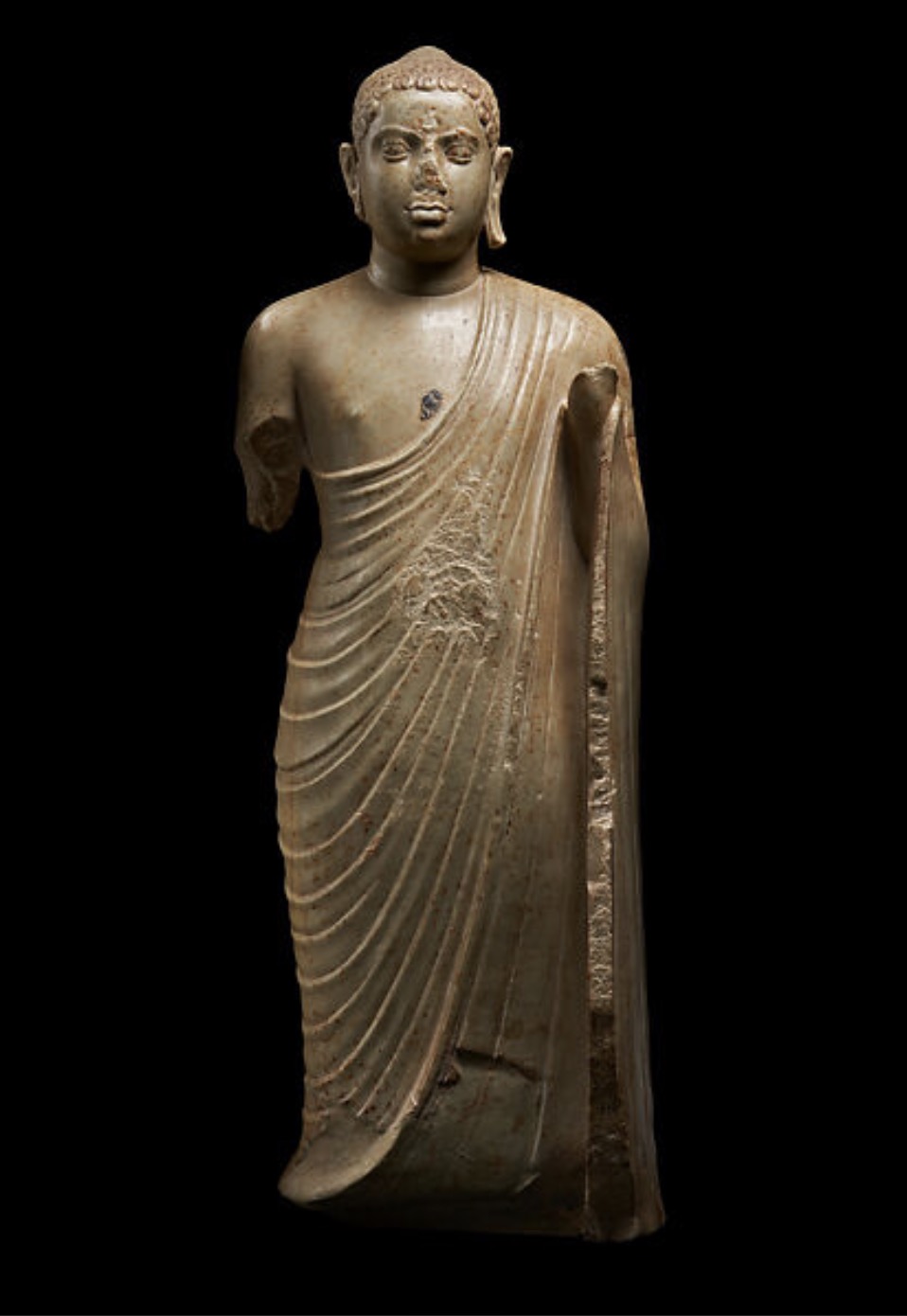
Statue of Buddha, Aluru, Krishna District, Andhra Pradesh, India, 3rd century AD
If you don't know the history of Buddhism, it's hard to guess its later fate from the vibrant early Indian Buddhist art on display. From the perspective of the era of artistic creation, it is difficult to predict the damage that humans are doing to the earth today. Walking through the expressive Buddha statues in the last hall of the exhibition, you will feel the close connection between human beings and gods, as if they are intertwined with the earth, trees, flowers, and birds. At this time, "modernity" seems to be a kind of burdened.
Note: The exhibition will last until November 13th. The original title of this article is "Buddhist Art from India: The Encounter of the Natural and the Supernatural"
